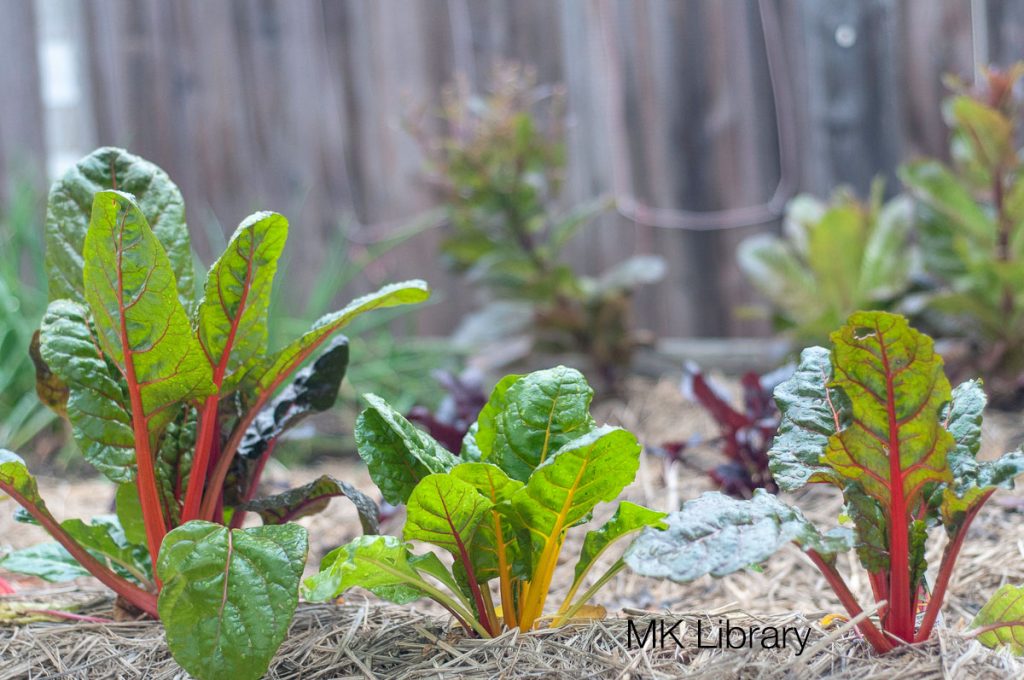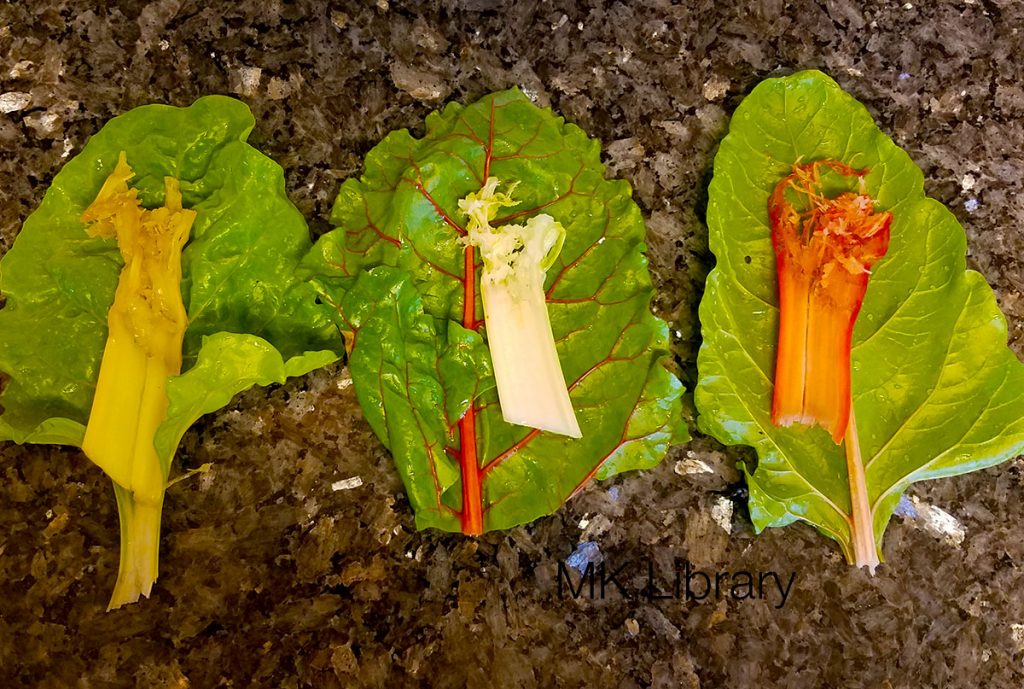Swiss chard, rainbow chard, bright lights, green chard, silverbeet, perpetual spinach, crab beet, seakale, mangold, spinach (in South Africa) – these are all pretty much the same thing with different names. I haven’t encountered too many recipes which call for raw chards. It can be tough and stringy, which isn’t pleasant for the unsuspecting chewer. When cooked or sautéed or baked in a variety of manners, chard is a delicious leafy vegetable.

Its an easy to grow plant, tolerant if you forget to water it for a bit, and also happy with a little too much water. Chard loves a ton of sun, unlike a lot of other leafy greens, and doesn’t bolt nearly as easy. From a self-sustaining perspective, this plant is a no brainer to include in your garden.

So delicious, you may not have realized how many different vitamins you’re ingesting. Chard is great for antioxidants, anti-inflammatory, blood sugar regulation, and can help pancreatic cells regenerate. One of my favorite resources, WHFoods, put together this handy chard (true fact, I originally misspelled “handy chart” as “handy chard” and I’m leaving that typo). Check out that Vitamin K!
Mentioning silverbeet earlier – chard is a source of the phytonutrients called betalains, same as beets. In 2004, a study was done on the different colors of rainbow chard which found 19 [1] different betaxanthins, plus an additional 6[2] in yellow chard. That’s like using 25 different cans of paint to get that beautiful vibrant color we enjoy seeing in our swiss chard. Nature is infinitely more complex than our primary colors, RGB, CMYK, or NCS.
Yeah, Swiss Chard is a beautiful thing in so many ways. I was in the middle of preparing some fresh out of the garden when I began wondering about the taste difference between colors. This was the perfect chance. All plants are from the same source, planted the same time, under the same sun and watering conditions. Picked and treated identically. This was as close to science as non-science was going to get in my kitchen. I sampled several stalks of each color.
Swiss Chard Taste Test – Tasting The Rainbow

Yellow is by far the sweetest of the colors. White or green and red stems were very similar in taste. Young stems held a lot more sweetness. The oldest stems were the most acidic with a burning sensation left in my mouth. If I had to guess, that would be the syringic acid. At least my blood sugar is being regulated.
If I were to eat raw stems again, I’d cut the baby stems and go for those. The smaller newly grown baby stems were chewable with the feasibility of being swallowed, unlike the older stems which could probably be chewed on for hours if left uncooked. Yellow baby stems would be the perfect combination of a sweet acidic snack. Red and the white/green were good on their own, but when compared to yellow or eaten back to back, simply did not have a chance. I’ve seen some purple chard out there but haven’t had a chance to sink my teeth into any yet – if any of you try it, let me know how it compares!
References
[1] Kugler F, Stintzing FC, and Carle R. Identification of Betalains from Petioles of Differently Colored Swiss Chard (Beta vulgaris L. ssp. cicla [L.] Alef. Cv. Bright Lights) by High-Performance Liquid Chromatography−Electrospray Ion. J. Agric. Food Chem., 2004, 52 (10), pp 2975-2981. 2004.
[2] Kugler, F., Graneis, S., Stintzing, F. C., Carle, R. Studies on betaxanthin profiles of vegetables and fruits from the Chenopodiaceae and Cactaceae. Zeitschrift fu¨r Naturforschung C/Journal of Biosciences, in press.
[3] Swiss chard nutrient chart source: http://www.whfoods.com/genpage.php?tname=foodspice&dbid=16
- About the Author
- Latest Posts
I strive to paint vivid landscapes with my words, bringing the magic of far-off lands and enchanting aromas to life for my readers. Combine passion for exploration and the art of gastronomy in an unending ode to the senses. When I’m not traversing the globe, I find solace in the earth beneath my fingertips, tending to my garden and working on projects around my verdant oasis. MK Library serves as a beacon, guiding fellow travelers and homebodies alike to embrace sustainability, nurturing both our planet and our souls with purpose. Full Bio.

